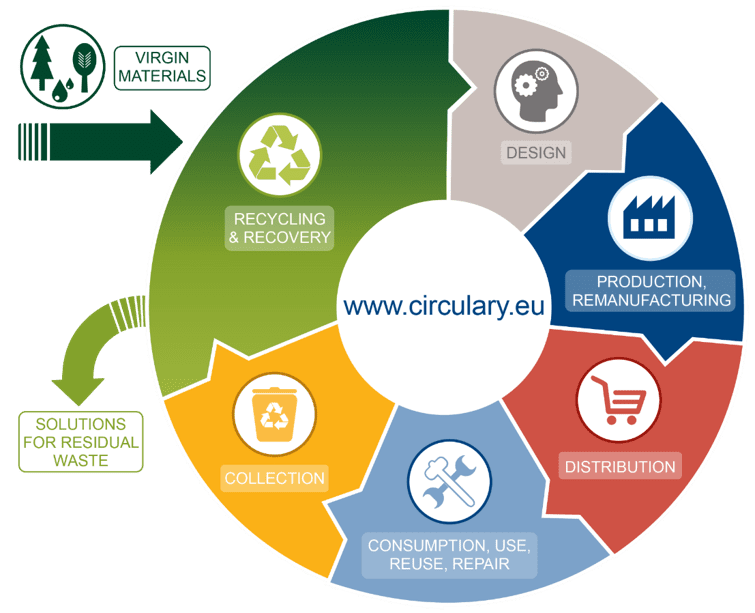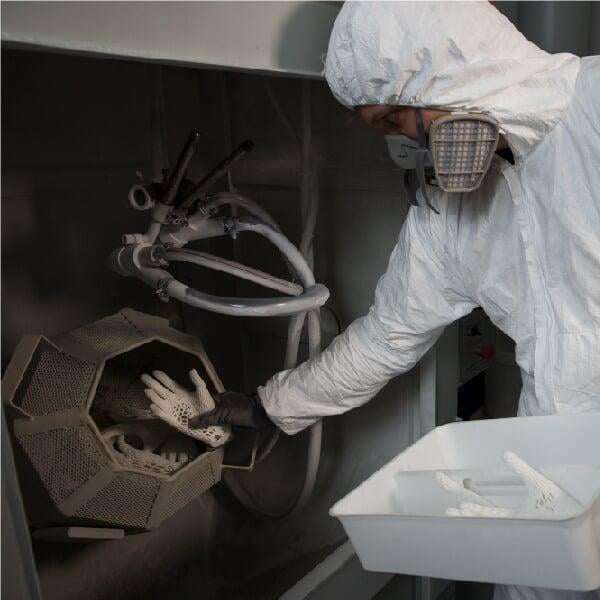Circularity – An Economic System Aimed at Eliminating Waste
It is estimated that humans have existed on earth for 200,000 years. Our lifetime makes up just a small fraction of existence on this planet, yet we have caused catastrophic damage to earth in recent decades. As the population of the world continues to rise, the deeper our environmental footprint sinks. It is vital that we protect and preserve this beautiful planet for its’ future inhabitants. In this blog I will differentiate between the linear and circular economy and discuss the importance of transitioning to a circular economy to ensure a safe and sustainable existence on earth.
The Difference Between Linear & Circular Economy
A Circular Economy is based on reducing, reusing and recycling materials and products. By being circular, the value of resources and materials are maximized in the life cycle of a product, they are then recovered and regenerated into new products and materials.
Packaging
Packaging is found to be the largest source of plastic waste globally. In a 2015 study, packaging was the highest industrial sector in industrial plastic waste generation, with an enormous 141 million metric tons of waste. Plastic packaging is also the highest source of plastic waste in the UK with 67%. Companies are now using biodegradable materials to replace and eliminate unnecessary plastic in packaging.
Textiles
There is a high volume of waste from the production of clothing and the disposal of textiles by consumers. The amount of textile waste in the United States has doubled over the last 20 years. In 2014, over 16 million tons of textile waste was generated and of that 10.46 million tons were sent to the landfill according to the US EPA. Charity shops and thrift shops are a way of reusing and recycling clothes to create value for new users. There are facilities for recycling textiles that may not serve purpose for a second user. However more needs to be done to align with the circular economy as 85% of textiles still end up in landfills.
Construction
Construction and Demolition Waste (CDW) is usually damaged or unused materials like bricks, concrete and wood during construction. According to Construction & Demolition Recycling, the volume of construction waste generated worldwide every year will nearly double to 2.2 billion tons by the year 2025. There are strategies in place to implement a more circular economy by reducing, reusing and recycling, however insufficient resources, lack of standardization and a lack of education are preventing the progress of the circular economy in the construction sector.
Inhabitants of our planet have been using the linear economy with a ‘make, use, dispose’ attitude to production and manufacturing. This has caused catastrophic damage to our environment and the costs to implement sustainable practices show the severity of the problem. According to estimates, the global amount of investment required for sustainable development is around 2.17 trillion U.S. dollars per year.
How can 3D printing help towards a circular economy?
- Reduction in Material & Process Waste
- Material Re-Usability & Re-Generation
- Digital Inventory
- Localized, On Demand Manufacturing
- Reduction in CO2 Emissions & Carbon Footprint of Products
- Improved Waste Management
- Sustainable Energy Consumption
How can we be more sustainable as businesses?
- Reducing, Reusing and Recycling to reduce output and decrease the volume of waste going to landfills.
- Replacing the world’s primary energy source of natural resources (e.g. fossil fuels), with renewable resources (e.g. wind, sunlight, rain, waves, tides, geothermal heat).
- Conscientious use of raw materials, emitting single-use plastics entirely.
- Design products to be more durable, while using materials that the product can be recycled after its life cycle.
- Changes in policies and regulations to ensure industries are responsible in their waste management.
- Improve education on the importance of recycling. Generation Z are more aware of protecting our environment through education from a young age.
We can already see how our production and consumption has impacted our environment with climate change, natural disasters and an increasing list of endangered species. It is time for policy makers, governments, industries and individuals to take responsibility for their output and be aware of how it affects our environment. It is time to adapt to new sustainable ways of living to slow down and prevent any further damage we cause.
By transitioning to a circular economy, we are being more responsible for our actions.
Credits
- From a Linear to a Circular Economy, Government of the Netherlands, 2019
- Wrap and Circular Economy, WRAP, 2019
- Plastic Waste By Industrial Sector Worldwide, Statista, 2019
- Plastic Waste Sources United Kingdom, Statista, 2019
- Textile Recycling Facts and Figures, The Balances Small Business, 2019
- Report: Global Construction Waste Will Almost Double by 2025, Construction Dive, 2019
- Investment Required for Sustainable Development, Statista, 2019
- How Long Humans Been On Earth, Universe Today, 2019




